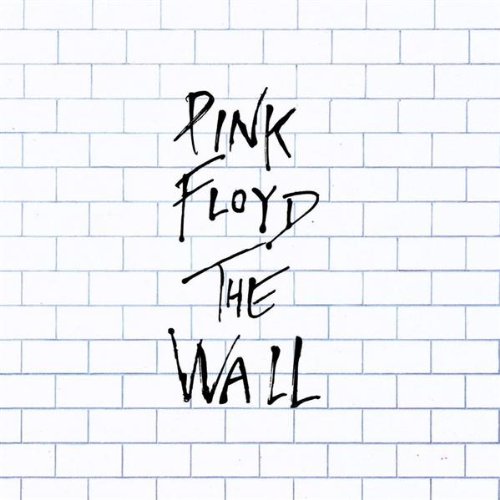
The Wall (1979)

Disc One
1. In the Flesh?
2. The Thin Ice
3. Another Brick in the Wall (Part I)
4. The Happiest Days of our Lives
5. Another Brick in the Wall (Part II)
6. Mother
7. Goodbye Blue Sky
8. Empty Spaces
9. Young Lust
10.One of My Turns
11.Don't Leave Me Now
12.Another Brick in the Wall (Part III)
13.Goodbye Cruel World
Disc Two
1. Hey You
2. Is There Anybody Out There?
3. Nobody Home
4. Vera
5. Bring the Boys Back Home
6. Comfortably Numb
7. The Show Must Go On
8. In the Flesh
9. Run Like Hell
10.Waiting for the Worms
11.Stop
12.The Trial
13.Outside the Wall
If you're looking for the definitive Pink Floyd record, here it is. The Wall isn’t just the band’s creative high point—it might be one of the greatest concept albums in rock history, period. Critics called it a masterpiece when it came out in 1979, and decades later, that praise still holds. The irony, though, is that this sprawling double album—so full of ambition and sonic brilliance—was born from a place of total misery. Specifically, Roger Waters’ misery.
By now firmly in control of the band’s direction, Waters was coming off the success of Animals, which had made Pink Floyd one of the biggest bands on the planet. But instead of feeling triumphant, Waters felt more disconnected than ever. So he wrote an album about it—an autobiographical descent into alienation, grief, paranoia, and the emotional walls we build to keep the world at arm’s length.
It’s not a cheerful story. His father died in World War II, he had a controlling mother, endured a stifling education, and then found fame, which only made everything worse. And all of that—every scrap of baggage—is poured into these songs. The narrative isn’t entirely linear (and good luck trying to follow it on first listen), but when paired with Alan Parker’s 1982 film adaptation, the whole picture comes into terrifying focus. It’s rare to find an album that lets you so clearly visualize someone’s emotional breakdown in real time.
Now, some detractors will argue that there’s not “enough music” here. And sure, the album is stuffed with phone calls, marching boots, screaming teachers, helicopter sounds, and the occasional military airstrike. But that’s kind of the point. This is more than a rock record—it’s a full theatrical production. You’re not supposed to throw it on in the background while doing dishes. You sit with it, all 80+ minutes, and let it pull you under.
Still, there are undeniably great songs. Unsurprisingly, the strongest moments often feature co-writing credits with David Gilmour. Tracks like Comfortably Numb, Run Like Hell, and Young Lust have an edge and a melodic punch that perfectly balance Waters’ darker tendencies. Gilmour’s guitar work here is phenomenal—Comfortably Numb alone is worth the price of admission.
Waters still contributes several classics on his own. Another Brick in the Wall (Part II) became the band’s biggest hit (complete with a children’s choir shouting about the evils of school), Mother, Hey You, and Goodbye Blue Sky round out the more accessible portion of the album. In the Flesh—which appears twice—is pure theatrical rock, setting the stage for the chaos that follows.
The rest of the album? Well, it leans heavily into drama over hooks. Much of it plays like a musical stage production, with character voices, operatic segments, and dramatic monologues. It’s not made for the radio, and that’s fine. It’s there to serve the story. Whether it’s all essential is up for debate, but it’s certainly cohesive. There’s no filler—just segments that work better within context than as standalone tracks.
Logistically, the album was so massive that touring behind it in the traditional sense was impossible. So instead, the band staged elaborate shows in just a few select cities. Decades later, a live version finally saw release, but most of the video footage was deemed unusable, which is a shame—those shows were legendary. Waters would later resurrect The Wall as a solo artist (first in Berlin with a celebrity ensemble, then again with a full tour), and it remains one of rock’s most theatrical productions.
Unfortunately, the album’s success did little to improve relations within the band. By the end of the sessions, keyboardist Richard Wright had been fired (though he stayed on as a hired hand for the live shows), and tensions between Waters and the rest of the group were at a boiling point. Lawsuits would follow. So would a messy divorce—between Waters and the band, that is.
Many argue that this was the last “true” Pink Floyd album. That depends on how you define the band, but there’s no question that this is their grandest, most complete artistic statement. It’s not always easy to listen to. It’s not supposed to be. But if you’re in the right headspace, The Wall is a masterpiece.
Go back to the main page
Go To Next Review